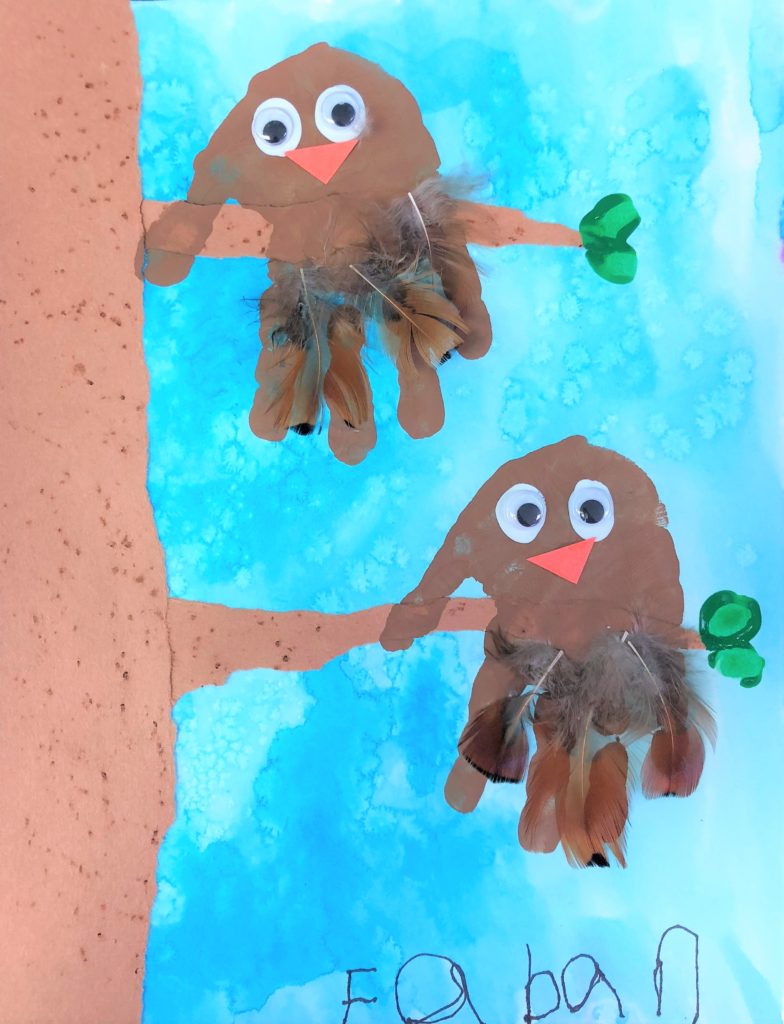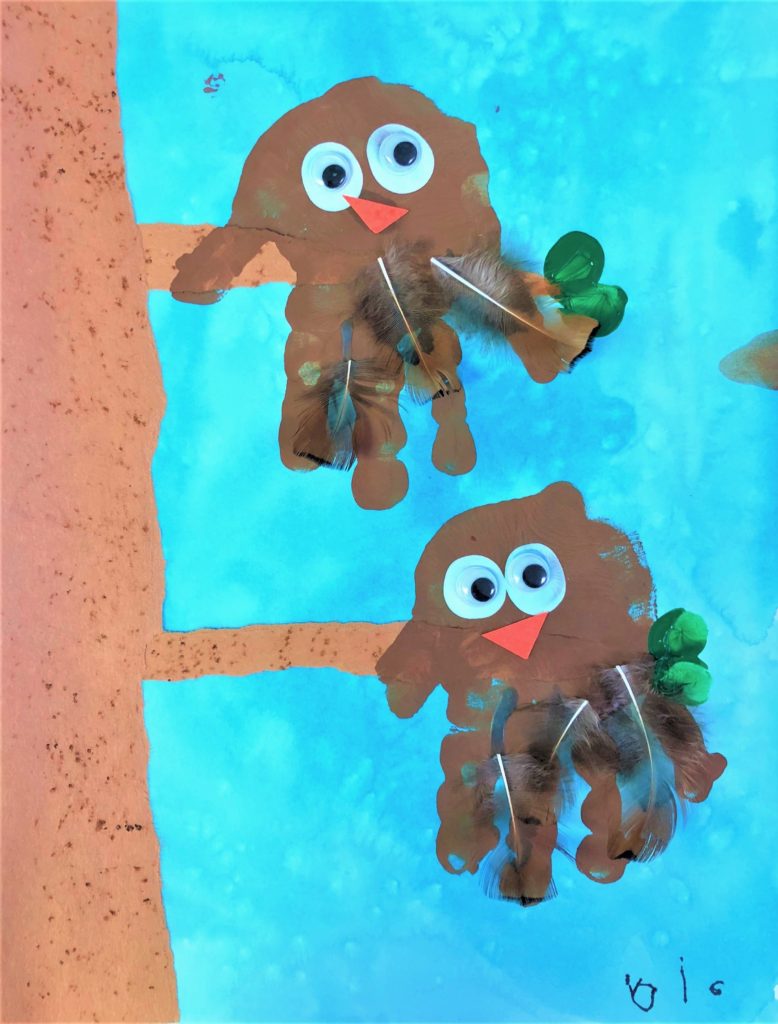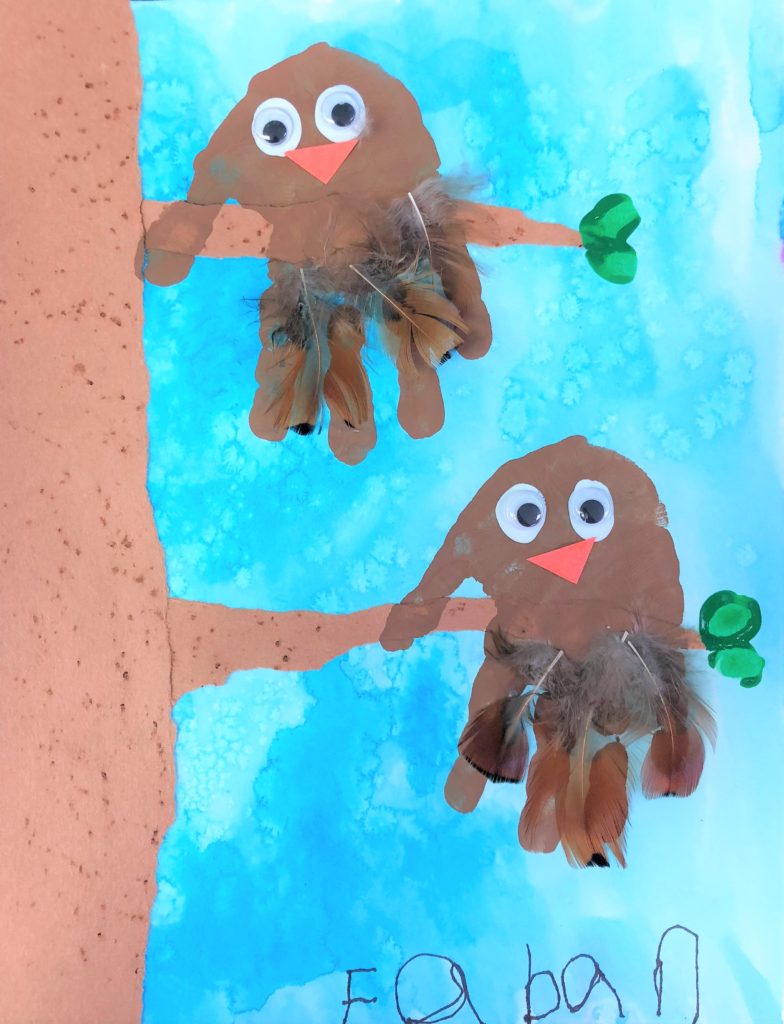This adorable art lesson for younger students is a hoot! Students will explore textures found in nature and especially with trees and owls. This project covers Common Core Standards for Science for grades TK-K which can be found at the end of the lesson.

Grade Level
Transitional Kindergarten, Kindergarten – The examples in this lesson are made by Transitional Kindergartners.
Objective
In this Texture Owls Art Lesson, students will use texture to create owls in a tree.
Time
5 – 30 min lessons
Materials
- Glue Stick – Elmer’s Glue Stick (E4062) (7 sticks)
- Washable No-Run School Glue, 4 oz, 1 Bottle (E304) – Pack of 2
- White, Green and Brown – Crayola Artista II Washable Liquid Tempera Paint, Set of 12, 16oz , Assorted Colors (54-8216)
- or Acrylic Paint – Crayola Washable Kids Paint Set, 10 Count
- Brown and orange – Pacon Tru-Ray Construction Paper, 9″ x 12″, 10 Classic Colors, 50 Sheets (P103031)
- Brown crayons
- Feathers
- Googly Eyes – DECORA 500 Pieces 6mm -12mm Black Wiggle Googly Eyes with Self-Adhesive
- 9×12 Watercolor paper – Canson (100510941) XL Series Watercolor Pad, 9″ x 12″, Fold-Over Cover, 30 Sheets
- Brushes – Acrylic Paint Brush Set, 1 Packs / 10 pcs Nylon Hair Brushes for All Purpose Oil Watercolor Painting Artist Professional Kits
- Liquid Water Colors – Sargent Art 22-6061 8-Ounce Watercolor Magic, Turquoise
- Kleenex for blotting paint
Inspiration/Artist
I was inspired to make this project after I saw this idea on Fun Family Crafts: Click Here
Instruction with Questions
Day 1
Have a variety of things for students to touch. Talk with them about texture.
Show them this video about texture – Sesame Street: Abby Cadabby teaches Josh Gad about Texture: Click Here
Pull students aside to paint the background. Keep the paper very wet, cover it completely with turquoise paint and add table salt. Once it dries it will have a star like effect.
Students who are not painting can do coloring pages about Autumn.
Day 2
Take students outside to create texture for the tree. On the pavement, have them rub a brown crayon onto brown construction paper.

Tear brown construction paper into one long thick piece for the trunk and two longer arm-like pieces for the branches. Call students over a few at a time to glue their tree onto their paper. I also have them write their name in sharpie on the front.
Day 3
Paint each student’s hand brown for the owl, and press them onto the branches.

Day 4
Again, calling students aside a few at a time, create three lines with the liquid glue and show students how to place their feathers onto the owl.

If time allows today, I also paint the top of a finger white and help them add the eyes of the owl.

Day 5
Once dry, I add googlie eyes to the owl. Students think their owls are a hoot!
Today, students will add the beak using pre-cut orange construction paper triangles, and leaves to the tree with their fingerprint.

Here are some finished Texture Owls Art Lesson pieces!
Common Core Standards
Kindergarten Science
Physical Sciences
1. Properties of materials can be observed, measured, and predicted.
a. Students know objects can be described in terms of the materials they are made of (e.g., clay, cloth, paper) and their physical properties (e.g., color, size, shape, weight, texture, flexibility, attraction to magnets, floating, sinking).
b. Students know water can be a liquid or a solid and can be made to change back and forth from one form to the other.
Life Sciences
2. Different types of plants and animals inhabit the earth.
a. Students know how to observe and describe similarities and differences in the appearance and behavior of plants and animals (e.g., seed-bearing plants, birds, fish, insects).
b. Students know stories sometimes give plants and animals attributes they do not really have.
c. Students know how to identify major structures of common plants and animals (e.g., stems, leaves, roots, arms, wings, legs).
Investigation and Experimentation
4. Scientific progress is made by asking meaningful questions and conducting careful investigations. Students will:
a. Observe common objects by using the five senses.
b. Describe the properties of common objects.
c. Describe the relative position of objects by using one reference (e.g., above or below).
d. Compare and sort common objects by one physical attribute (e.g., color, shape, texture, size, weight).
e. Communicate observations orally and through drawings.











Another fun project that teaches art (TEXTURE!) with super cute results. Thanks again!